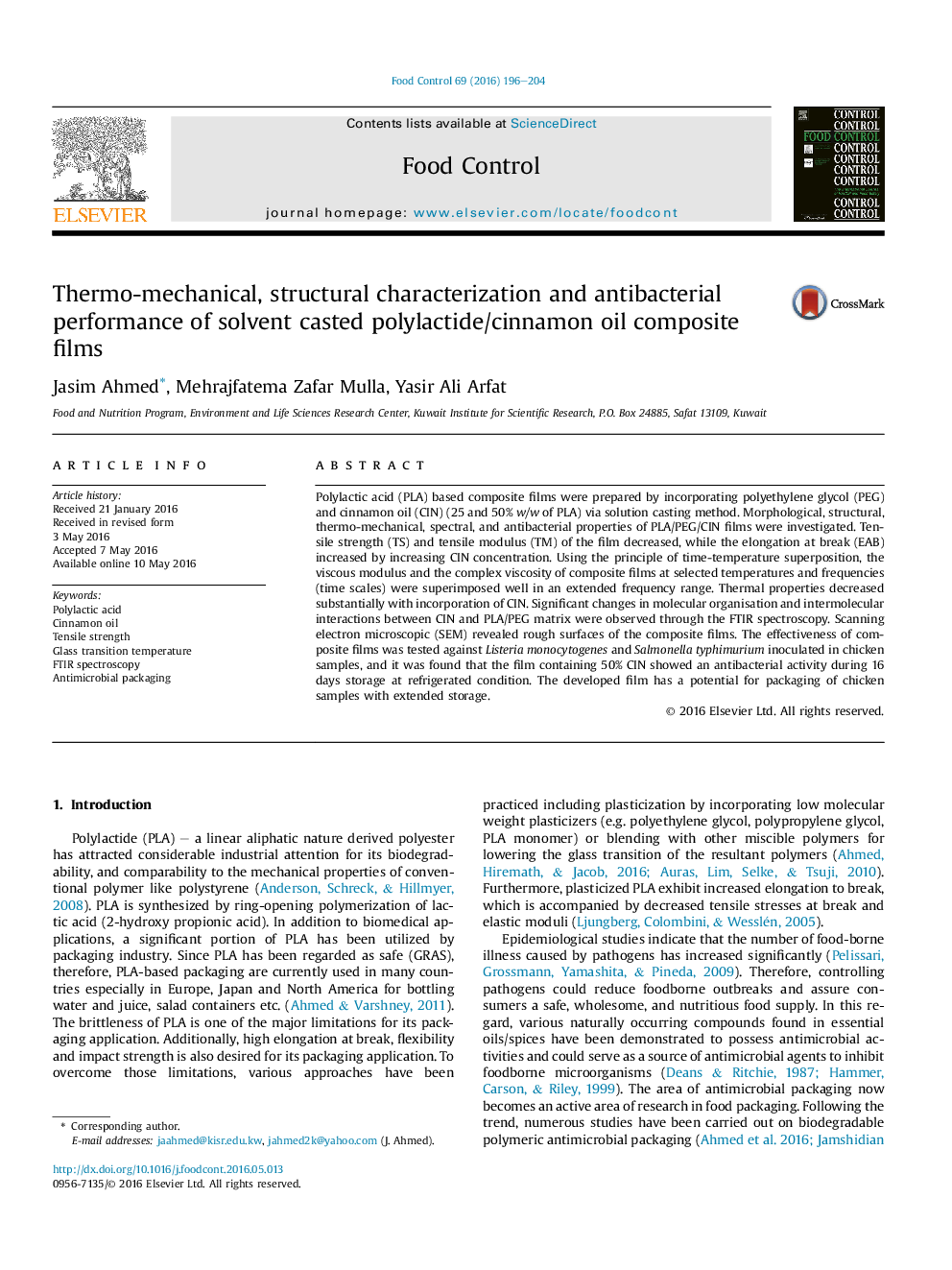| Article ID | Journal | Published Year | Pages | File Type |
|---|---|---|---|---|
| 6390043 | Food Control | 2016 | 9 Pages |
â¢An antimicrobial film was developed based on polylactide and cinnamon oil.â¢Thermo-mechanical properties of films were affected by cinnamon oil incorporation.â¢SEM micrographs revealed the presence of micro-pores in the composite film.â¢PLA/cinnamon oil composite film could be used as active food packaging material.
Polylactic acid (PLA) based composite films were prepared by incorporating polyethylene glycol (PEG) and cinnamon oil (CIN) (25 and 50% w/w of PLA) via solution casting method. Morphological, structural, thermo-mechanical, spectral, and antibacterial properties of PLA/PEG/CIN films were investigated. Tensile strength (TS) and tensile modulus (TM) of the film decreased, while the elongation at break (EAB) increased by increasing CIN concentration. Using the principle of time-temperature superposition, the viscous modulus and the complex viscosity of composite films at selected temperatures and frequencies (time scales) were superimposed well in an extended frequency range. Thermal properties decreased substantially with incorporation of CIN. Significant changes in molecular organisation and intermolecular interactions between CIN and PLA/PEG matrix were observed through the FTIR spectroscopy. Scanning electron microscopic (SEM) revealed rough surfaces of the composite films. The effectiveness of composite films was tested against Listeria monocytogenes and Salmonella typhimurium inoculated in chicken samples, and it was found that the film containing 50% CIN showed an antibacterial activity during 16 days storage at refrigerated condition. The developed film has a potential for packaging of chicken samples with extended storage.
